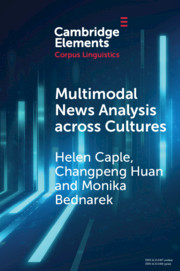Element contents
Multimodal News Analysis across Cultures
Published online by Cambridge University Press: 02 September 2020
Summary
Keywords
- Type
- Element
- Information
- Series: Elements in Corpus LinguisticsOnline ISBN: 9781108886048Publisher: Cambridge University PressPrint publication: 17 September 2020
References
- 36
- Cited by



